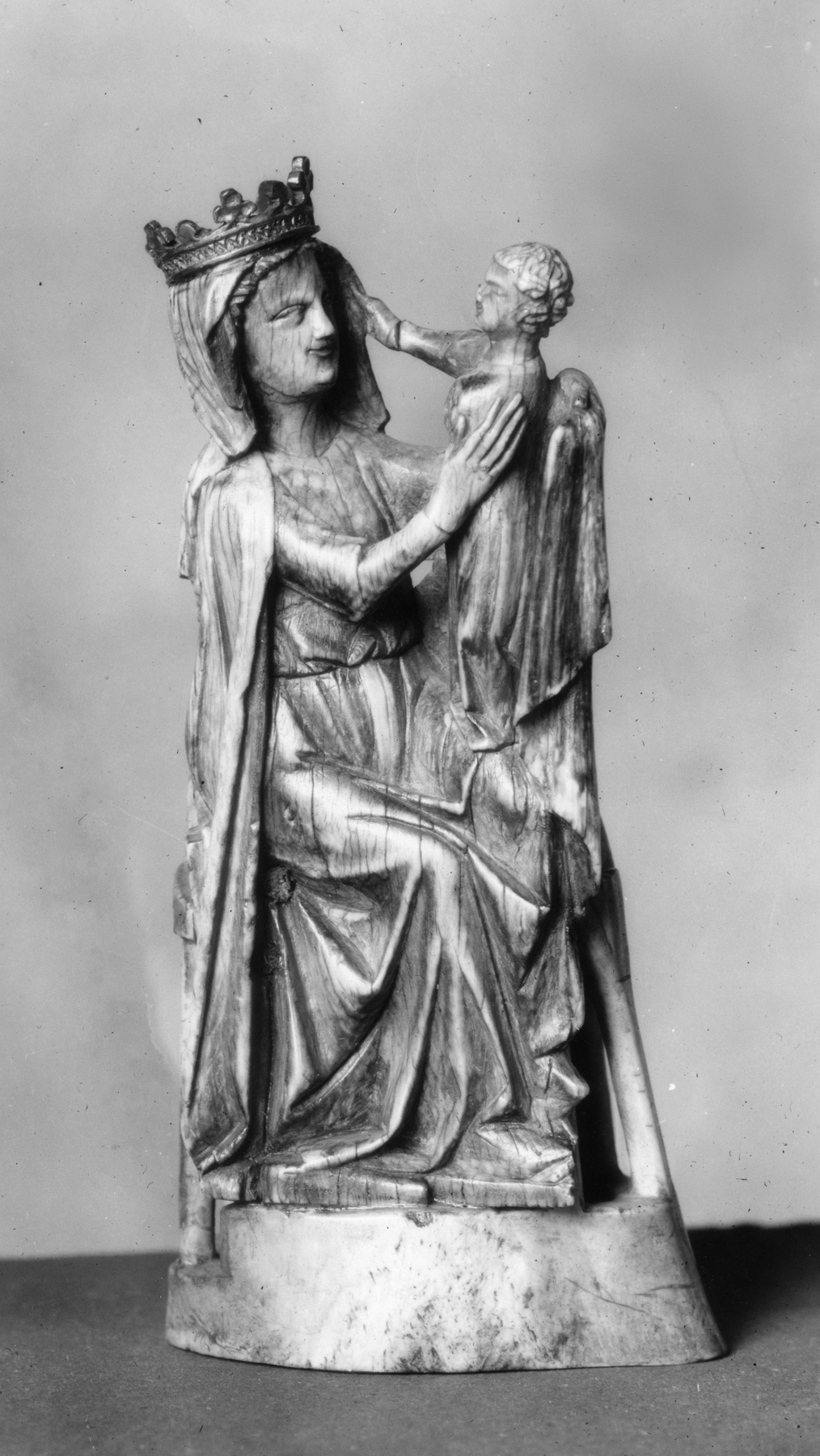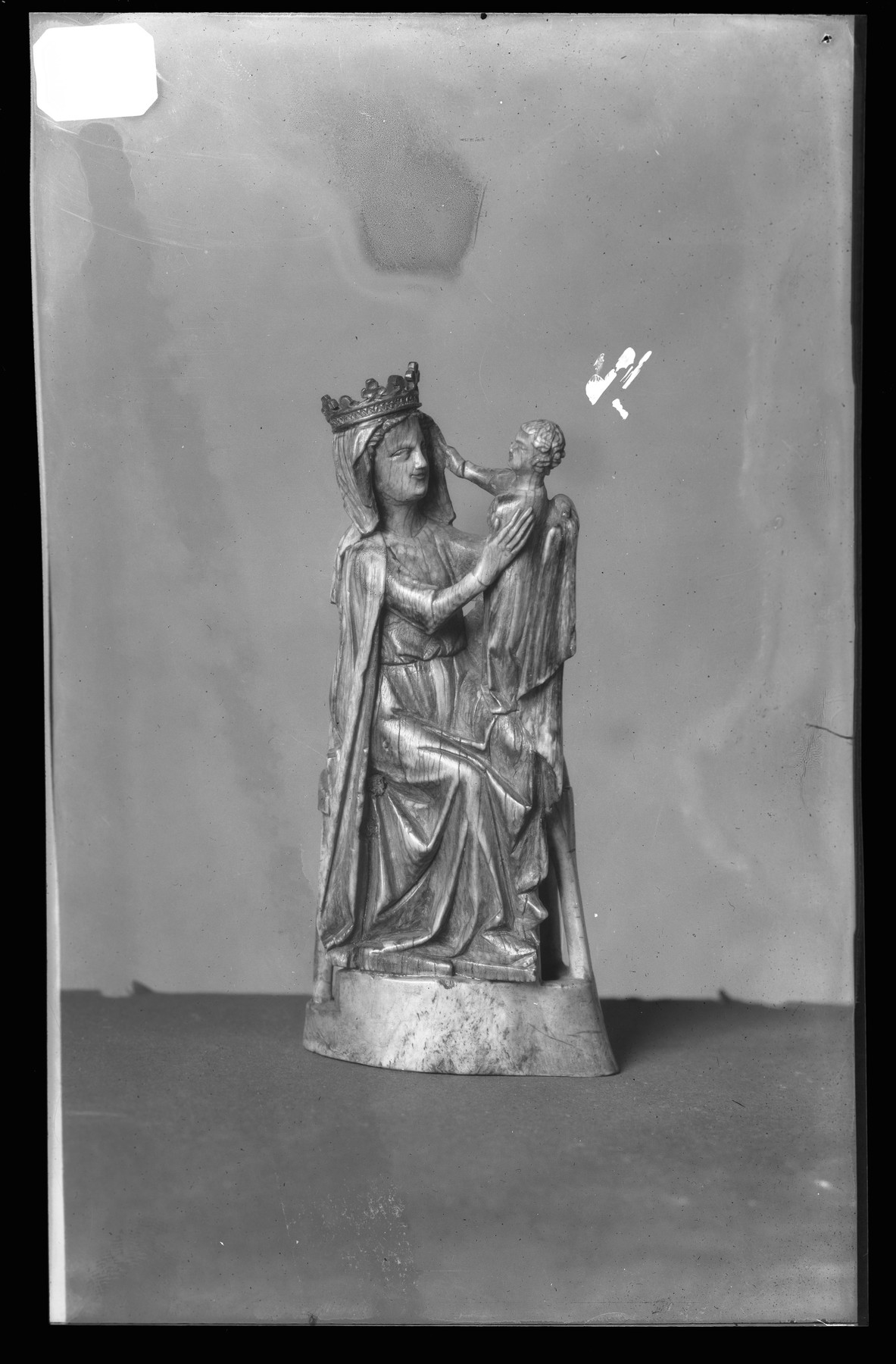Virgin and Child
(Medieval Europe )
The small seated Madonna with a standing Christ Child displays unusual geometric drapery folds and profiles. The Virgin's long robe falls to the ground, and the Child is framed with drapery. The faces are somewhat pinched and the Child is unusually thin and vivacious. The gilt-copper crown is original.
The left arm of the Child is broken, and there are two later holes in the Virgin's skirt for attachment by wooden pins to the bone support, which is probably Scandinavian work of the 18th century.
Provenance
Provenance (from the French provenir, 'to come from/forth') is the chronology of the ownership, custody, or location of a historical object. Learn more about provenance at the Walters.
A. André, Paris [date and mode of acqusition unknown]; A. André Sale, Paris, April 23-24, 1920, lot 256; Léon Gruel, Paris [date and mode of acquisition unknown]; Henry Walters, Baltimore, 1922, by purchase; Walters Art Museum, 1931, by bequest.
Geographies
France
(Place of Origin)
Belgium, Flanders (Place of Origin)
Measurements
H: 4 5/16 in. (11 cm)
Credit Line
Acquired by Henry Walters, 1922
Location in Museum
Not on view
Accession Number
In libraries, galleries, museums, and archives, an accession number is a unique identifier assigned to each object in the collection.
In libraries, galleries, museums, and archives, an accession number is a unique identifier assigned to each object in the collection.
71.163




